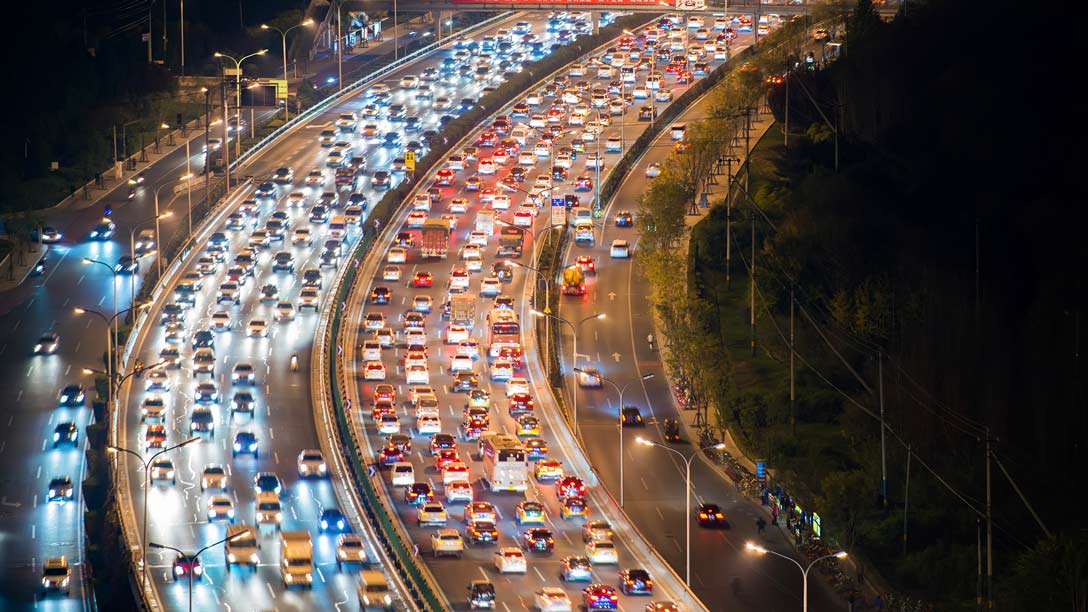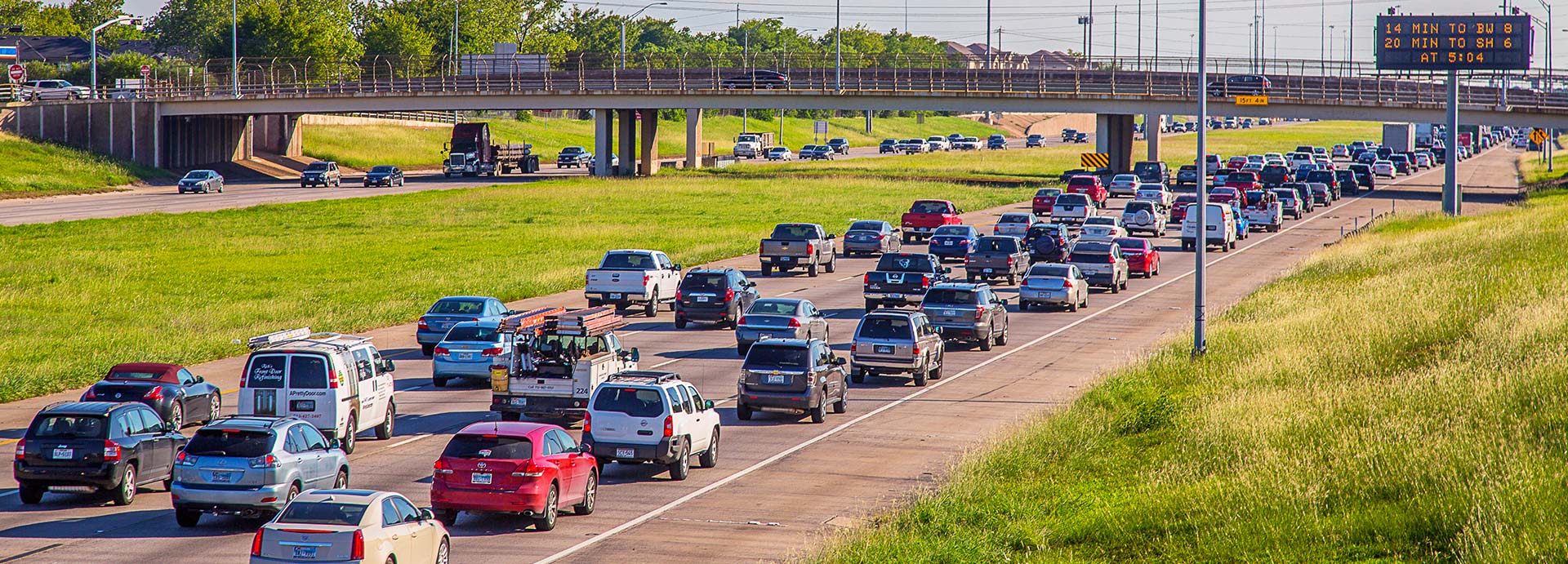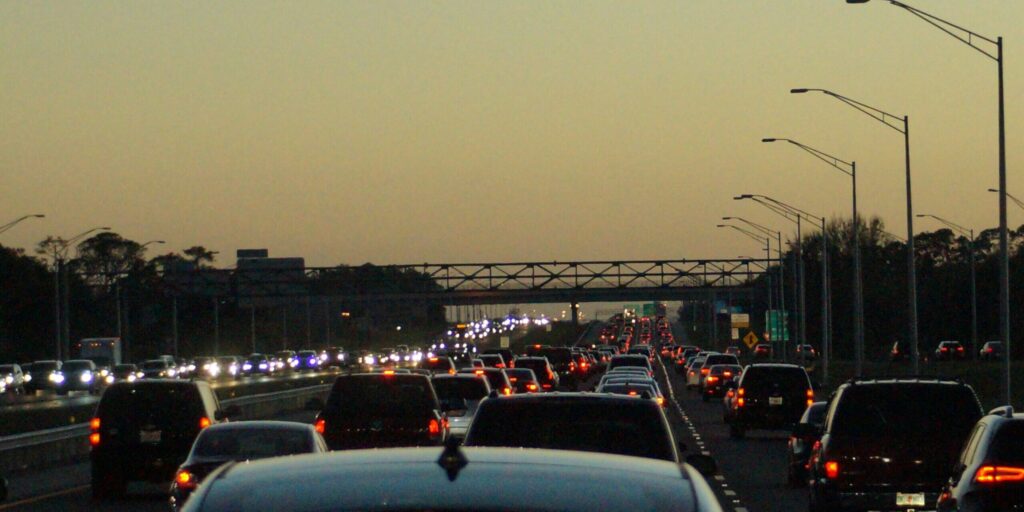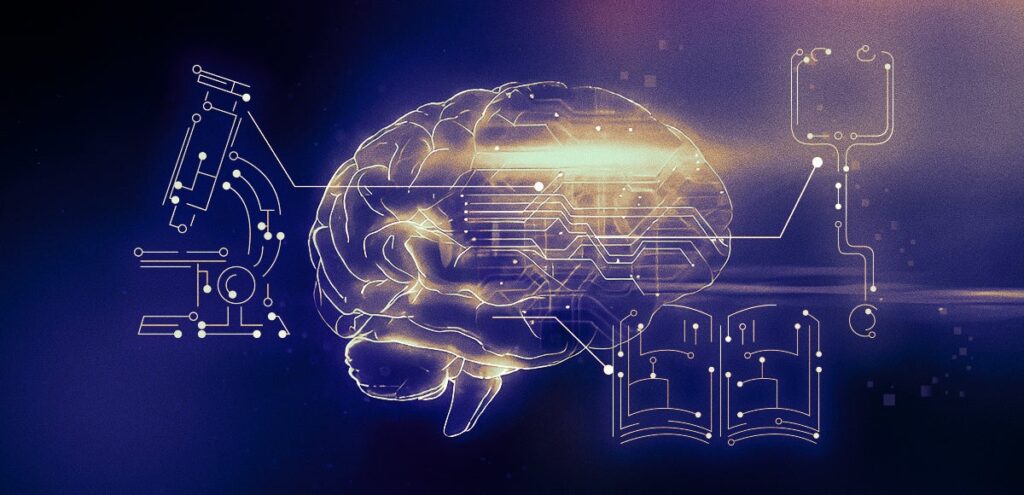Traffic, traffic, traffic refers to the volume of visitors that a website receives, which is crucial for its success and visibility in search engine results. Generating high-quality traffic is essential for attracting potential customers and increasing conversions.
Therefore, increasing website traffic is a key focus for businesses aiming to grow their online presence and reach a wider audience. By implementing various strategies like content optimization, keyword research, social media promotion, and link building, businesses can effectively drive more targeted traffic to their websites, boosting their visibility and ultimately achieving their marketing goals.
Understanding Traffic
Traffic is a crucial aspect of any website, as it directly affects its visibility and success. Understanding traffic is essential to make informed decisions and strategies for improving website performance. In this section, we will explore the definition of traffic and the different types it encompasses.
Definition Of Traffic
Traffic refers to the number of visitors or users that come to a website within a specified period of time. It signifies the flow of individuals who access a website, whether through organic searches, referrals, direct visits, or other means. Traffic is an important metric that enables website owners to gauge the effectiveness of their online presence and measure the reach of their content.
Types Of Traffic
There are several types of traffic that contribute to the overall visitor count of a website. Understanding these types can provide valuable insights into where the traffic is coming from and how to optimize for better results. Let’s take a closer look at each type:
1. Organic Traffic
Organic traffic refers to visitors who discover a website through a search engine’s organic search results. These visits are unpaid and result from the relevance and visibility of a website’s content in search engine rankings. Achieving high organic traffic usually involves effective search engine optimization (SEO) techniques, such as using relevant keywords and creating quality content that meets user intent.
2. Referral Traffic
Referral traffic encompasses visitors who come to a website through external sources, such as backlinks from other websites, social media platforms, online directories, or online advertisements. This type of traffic indicates the effectiveness of a website’s promotional efforts and networking capabilities. Building relationships with other websites or leveraging social media can help increase referral traffic.
3. Direct Traffic
Direct traffic represents visitors who access a website by directly typing its URL into their browser or clicking on a bookmark. These visitors already know the website’s domain and navigate directly to it. Direct traffic often indicates a loyal or returning user base, and it can be influenced by factors like brand recognition, offline advertising, or direct marketing efforts.
4. Paid Traffic
Paid traffic refers to visitors who come to a website through paid advertising campaigns, such as pay-per-click (PPC) ads or display ads. This type of traffic requires financial investment and is typically driven by targeted advertisements on search engines, social media platforms, or other websites. Paid traffic can provide quick visibility and reach, especially when combined with effective ad targeting and compelling ad copies.
In conclusion, understanding the different types of traffic helps website owners identify the sources of their visitors and optimize their strategies accordingly. By analyzing traffic data, website owners can make informed decisions to attract more relevant visitors, improve user experience, and achieve their business goals.

Credit: www.geotab.com
Causes Of Traffic
Traffic congestion is a common sight that frustrates drivers and wastes precious time. Understanding the causes of traffic is key to finding solutions and making our roadways more efficient. Let’s explore the three main factors that contribute to traffic: road congestion, traffic accidents, and construction and road work.
Road Congestion
Road congestion, or heavy traffic, occurs due to several reasons. One major cause is the sheer volume of vehicles on the road. As urban areas continue to grow, the number of cars on the road increases, leading to overcrowding and bottlenecks. Additionally, lack of proper infrastructure, inefficient traffic management systems, and poor planning contribute to congestion.
Another common cause of congestion is rush hours or peak travel times. During these periods, when people are commuting to and from work or school, the roads become clogged with cars causing delays and slow-moving traffic. Furthermore, accidents or breakdowns on major routes can create backups that affect the overall flow of vehicles.
Traffic Accidents
Traffic accidents are unfortunate events that can cause significant delays and congestion. Collisions, whether minor fender benders or major accidents, can obstruct lanes, divert traffic, and sometimes even close down entire stretches of road. These incidents not only cause delays for the affected drivers but also impact the surrounding areas and lead to a ripple effect of congestion.
Additionally, accidents often require emergency response teams to arrive on the scene, further hindering traffic flow. The time it takes to clear wreckage, administer medical aid, and document the incident can result in prolonged traffic jams. Moreover, rubbernecking—when drivers slow down to look at accident scenes—can also contribute to traffic congestion by causing unnecessary delays.
Construction And Road Work
Construction and road work play a significant role in causing traffic disruptions. While necessary to improve infrastructure and maintain roadways, these activities can lead to delays and congestion. Construction projects often require the closure of lanes or entire roads, diverting traffic onto alternative routes. In addition to lane closures, reduced speed limits and traffic diversions can also slow down vehicles.
Furthermore, construction vehicles and equipment take up space on the road, reducing the available lanes for other drivers. These factors combined with delays due to materials delivery, noise restrictions, and varying work schedules exacerbate congestion caused by construction and road work.
In conclusion, road congestion, traffic accidents, and construction and road work are the primary causes of traffic. Understanding these factors allows us to develop strategies to alleviate congestion, improve road safety, and minimize disruptions caused by construction activities. Through better planning, efficient traffic management, and careful implementation of road projects, we can make our journeys smoother and more efficient.
Effects Of Traffic
Traffic congestion is a common problem in urban areas, with numerous effects on our daily lives, environment, and economy. The effects of traffic should not be underestimated, as they can cause significant delays and inconvenience to commuters, have adverse environmental impacts, and contribute to economic losses. Let’s take a closer look at these effects:
Delays And Inconvenience
One of the most significant effects of traffic is the delays and inconvenience it causes for commuters. Traffic congestion leads to longer travel times, resulting in frustration, stress, and wasted hours. Whether you’re sitting in your car during rush hour or waiting at a packed bus stop, traffic congestion can eat away at your valuable time. These delays can impact not only individuals but also businesses, as employees may arrive late for work or miss important appointments and meetings.
Environmental Impact
The environmental impact of traffic congestion is another critical concern. When vehicles are stuck in traffic, they often idle for extended periods, emitting harmful pollutants into the air. This increase in air pollution contributes to poor air quality, which poses risks to our respiratory health and increases the prevalence of respiratory diseases. Additionally, the excess fuel consumption resulting from traffic congestion contributes to higher carbon emissions and exacerbates climate change. The environmental damage caused by traffic congestion highlights the need for sustainable transportation solutions that reduce vehicle dependency and promote eco-friendly alternatives like cycling, walking, and public transit.
Economic Impact
The economic impact of traffic congestion is far-reaching, affecting both individuals and businesses. Commuters stuck in traffic experience increased fuel consumption, leading to higher transportation costs. Businesses also suffer from traffic congestion, as it can delay the delivery of goods and services, disrupt supply chains, and reduce overall productivity. Moreover, the time wasted in traffic translates into financial losses for businesses and reduced economic output. To mitigate these economic impacts, it is crucial for city planners and policymakers to invest in efficient transportation infrastructure, such as better road networks and public transit systems, and implement traffic management strategies.
Managing Traffic
Managing traffic flow is crucial in keeping our roads safe and ensuring smooth transportation for everyone. Various measures are employed to control traffic effectively and efficiently. In this section, we will explore some of the traffic control measures, the benefits of intelligent transportation systems, and the importance of public transportation.
Traffic Control Measures
Traffic control measures play a vital role in managing traffic congestion and reducing accidents. Implementing these measures helps to maintain order and ensure the safety of both pedestrians and drivers. Some common traffic control measures include:
- Installing traffic signals at intersections to regulate the flow of vehicles and pedestrians.
- Creating designated lanes for different types of vehicles, such as bus lanes, bike lanes, and carpool lanes.
- Using road signs and markings to provide clear instructions and guidance to drivers.
- Implementing speed limits to prevent accidents and maintain a smooth traffic flow.
- Adopting roundabouts at intersections, which reduce delays and improve traffic efficiency.
By implementing these control measures, authorities can effectively manage traffic, reduce congestion, and enhance overall road safety.
Intelligent Transportation Systems
Intelligent Transportation Systems (ITS) are revolutionizing the way we manage traffic. These advanced technologies aim to improve the efficiency, safety, and sustainability of our transportation systems. Some key benefits of ITS include:
- Real-time traffic monitoring and data analysis to identify congestion hotspots and implement timely measures.
- Dynamic message signs that provide drivers with real-time information regarding traffic conditions and alternative routes.
- Smart traffic signal control systems that adapt to current traffic demands, optimizing signal timings for smoother traffic flow.
- Integrated communication networks between vehicles and infrastructure, enabling alerts and warnings to be shared instantaneously.
- Automated toll collection systems that reduce the need for manual transactions, saving time and improving efficiency.
The integration of ITS in our transportation systems empowers us to manage traffic more intelligently and proactively, resulting in safer roads and smoother journeys.
Public Transportation
Public transportation plays a crucial role in managing traffic by reducing the number of private vehicles on the road. These systems provide an alternative mode of transportation for commuters, reducing congestion and the associated environmental impact. Benefits of public transportation include:
- Efficient and reliable transportation options, ensuring timely arrival and departure.
- Reduced dependency on personal vehicles, minimizing traffic congestion and parking issues.
- Lower carbon footprint, as public transportation can accommodate a larger number of passengers per vehicle.
- Cost-effective travel for individuals who don’t own a vehicle, saving money on fuel, maintenance, and parking expenses.
- Promotion of community connectivity, fostering a sense of togetherness and accessibility.
By encouraging the use of public transportation, we can alleviate traffic congestion, reduce greenhouse gas emissions, and create a more sustainable future for transportation.
Traffic Solutions
Dealing with heavy traffic is a common challenge faced by urban areas worldwide. From congested highways to gridlocked streets, the need for effective traffic solutions has never been greater. Fortunately, there are several measures that can be taken to alleviate this burden and promote smoother, more efficient transportation systems. In this blog post, we will explore three key traffic solutions: expanding and enhancing infrastructure, promoting carpooling and ride-sharing, and encouraging active transportation.
Expanding And Enhancing Infrastructure
Improving and expanding infrastructure is a crucial aspect of addressing traffic issues. By investing in the development of roads, bridges, and public transportation networks, cities can accommodate the growing number of vehicles on the road. Additionally, the integration of smart technologies, such as intelligent traffic signal systems and real-time traffic monitoring, can help optimize the flow of vehicles and reduce congestion. With these infrastructure upgrades, commuting becomes smoother, faster, and less frustrating for everyone.
Promoting Carpooling And Ride-sharing
Carpooling and ride-sharing solutions offer an effective way to reduce the number of vehicles on the road. Encouraging commuters to share rides not only helps alleviate traffic congestion but also reduces carbon emissions and saves money on fuel costs. By implementing incentives such as dedicated carpool lanes and discounted tolls, cities can incentivize individuals to opt for carpooling or ride-sharing services. This not only helps minimize traffic but also fosters a sense of community and collaboration among commuters.
Encouraging Active Transportation
In addition to expanding infrastructure and promoting shared mobility, encouraging active transportation is another vital traffic solution. Encouraging individuals to walk, cycle, or use alternative modes of transportation can reduce reliance on private cars, leading to fewer vehicles on the road and less congestion. Creating dedicated bike lanes, pedestrian-friendly sidewalks, and safe crossing points ensures that active transportation is a viable and attractive option for commuters. Not only does this improve traffic flow, but it also promotes healthier lifestyles and reduces environmental impact.
Implementing these traffic solutions can have a significant impact on reducing congestion, enhancing the overall transportation experience, and creating more sustainable and livable cities. By combining infrastructure improvements, carpooling and ride-sharing initiatives, and active transportation encouragement, we can pave the way for a better, more efficient future. It’s time to put these solutions into action and make traffic troubles a thing of the past.

Credit: www.txdot.gov
Future Of Traffic
Are you tired of sitting in traffic, wasting valuable time that could be better spent elsewhere? Don’t worry, the future of traffic is looking promising! With advancements in technology and the implementation of various initiatives, we can expect to see significant improvements in the way we commute. Let’s explore some exciting developments that are set to revolutionize the way we move around:
Autonomous Vehicles
The rise of autonomous vehicles has been gaining momentum in recent years. These vehicles, driven by artificial intelligence, have the capability to navigate the roads without any human intervention. With their advanced sensors and algorithms, autonomous vehicles can analyze the environment and make informed decisions to ensure a safe and efficient journey. Imagine a world where AI-powered cars eliminate human error, resulting in reduced traffic congestion and faster travel times.
Smart City Initiatives
Cities around the world are implementing smart city initiatives to optimize traffic management. By leveraging technology, these initiatives aim to create intelligent transportation systems that monitor and control traffic flow in real-time. Smart traffic lights that adjust timings based on traffic patterns, integrated GPS systems that guide drivers to the least congested routes, and intelligent parking systems that minimize the search for parking spaces are just a few examples. With these initiatives in place, we can expect to see a significant reduction in traffic jams and improved overall traffic management.
Sustainable Transportation
In the pursuit of a greener future, sustainable transportation solutions are gaining traction. Electric vehicles (EVs) have become increasingly popular, thanks to their zero-emission capabilities. As the infrastructure for EVs continues to expand, more people will be encouraged to switch to electric transportation, reducing the number of polluting vehicles on the road. Additionally, other sustainable options such as cycling lanes, pedestrian-friendly infrastructure, and improved public transportation systems can contribute to a more sustainable and efficient traffic ecosystem.
In conclusion, the future of traffic holds exciting possibilities. From autonomous vehicles to smart city initiatives and sustainable transportation solutions, we can look forward to a future where commuting will be smoother and more environmentally friendly. With these advancements, traffic congestion may become a thing of the past, and we will be able to spend our time more productively, without the hassle of being stuck in traffic jams.
Traffic Laws And Regulations
When it comes to keeping our roads safe and ensuring the smooth flow of traffic, traffic laws and regulations play a crucial role. These regulations are the guidelines that all drivers must adhere to in order to maintain order and prevent accidents. Understanding these rules is not only important for drivers, but also for pedestrians and cyclists who share the road. In this section, we will explore the various aspects of traffic laws and regulations, including their importance, enforcement, and key rules to keep in mind.
Traffic Rules And Regulations
Traffic rules and regulations are a set of laws that govern the behavior of individuals using the roadways. These rules are in place to ensure the safety of everyone on the road and to regulate the flow of traffic. By following these rules, drivers can minimize the risk of accidents and maintain an efficient transportation system. Some common traffic rules include:
- Speed limits: Different roads have different speed limits, which drivers must adhere to. These limits are designed to prevent accidents and ensure a safe driving experience.
- Seat belt laws: Most jurisdictions mandate the use of seat belts for both drivers and passengers. Wearing seat belts significantly reduces the risk of injury in the event of a crash.
- Stop signs and traffic signals: Stop signs and traffic signals are essential for controlling the flow of traffic at intersections. Drivers must obey these signals to prevent collisions.
- Right-of-way: Knowing who has the right-of-way in certain situations is crucial for avoiding accidents. Yielding to pedestrians, emergency vehicles, and other drivers when required is essential.
- Driving under the influence: Driving while intoxicated is not only illegal but also extremely dangerous. Alcohol or drug impairment can significantly impair judgment, reflexes, and driver’s ability to operate a vehicle safely.
- Distracted driving: Using mobile phones or engaging in other distracting activities while driving is against the law in many jurisdictions. Distracted driving can lead to delayed reaction times and increase the risk of accidents.
Enforcement Of Traffic Laws
Enforcement of traffic laws is vital to ensure compliance and discourage reckless driving. Law enforcement agencies play a crucial role in upholding these laws and maintaining road safety. Here are some important aspects of traffic law enforcement:
- Traffic police officers: Traffic police officers are responsible for enforcing traffic laws by monitoring road conditions, conducting traffic stops, and issuing citations or warnings when necessary.
- Speed cameras and red-light cameras: Automated cameras are often installed to detect and record violations such as speeding or running red lights. These cameras help enforce traffic laws and discourage offenders.
- DUI checkpoints: Law enforcement agencies often set up sobriety checkpoints to detect and apprehend drivers under the influence of alcohol or drugs. These checkpoints are designed to deter drunk driving and protect public safety.
- Penalties and fines: Violating traffic laws can result in penalties and fines. These consequences vary depending on the severity of the offense and jurisdiction, and often act as deterrents to prevent future violations.
- Public awareness and education: In addition to enforcement, public awareness campaigns and educational programs play a crucial role in promoting compliance with traffic laws. These initiatives aim to educate the public about the importance of safe driving and the consequences of violating traffic rules.
By understanding and respecting traffic laws and regulations, we can all contribute to road safety and make our journeys smoother and more enjoyable. So let’s commit to being responsible motorists, respecting the rules of the road, and ensuring the safety of ourselves and others.
Traffic Management Challenges
In today’s fast-paced world, traffic management has become an increasingly complex task. The rapid urbanization and population growth, coupled with limited funding and resources, have given rise to numerous challenges. Understanding these challenges is crucial for developing effective solutions that can alleviate the burden on our road systems. In this article, we will explore two key aspects that contribute to the traffic management challenges we face: urbanization and population growth, and limited funding and resources.
Urbanization And Population Growth
The ongoing process of urbanization has transformed our cities into bustling centers of economic and social activity. However, this rapid urbanization has also led to several traffic management challenges. As cities expand, the population grows, which directly impacts the volume of traffic on our roads. With more people commuting to work, school, and other destinations, traffic congestion has become a significant concern.
This increased traffic volume puts a strain on existing road infrastructure, leading to:
- Road congestion
- Longer travel times
- Increased fuel consumption and air pollution
- Higher chances of accidents
- Difficulty in maintaining road safety and traffic flow
Addressing the traffic issues stemming from urbanization and population growth requires a comprehensive approach that includes better urban planning, efficient public transportation systems, and the use of technology to optimize traffic flow.
Limited Funding And Resources
In addition to the challenges posed by urbanization and population growth, limited funding and resources further compound the task of traffic management. As cities strive to meet the growing demands of their residents, allocating sufficient funds and resources to tackle traffic-related issues becomes increasingly difficult. Limited financial resources mean lower budgets for road maintenance, expansion, and implementing traffic management solutions.
The consequences of limited funding and resources include:
- Delayed road repairs and maintenance
- Inadequate traffic management infrastructure
- Insufficient public transportation options
- Inability to adopt innovative traffic management technologies
To overcome these challenges, governments and transportation authorities must explore alternative funding sources, such as public-private partnerships, and prioritize investments in sustainable transportation solutions. Additionally, optimizing existing resources through better planning and management can also mitigate the impact of limited funding on effective traffic management.
In conclusion, the traffic management challenges we face are multifaceted, requiring a holistic approach that considers the effects of urbanization, population growth, limited funding, and resource availability. By understanding these challenges and implementing innovative solutions, we can strive towards efficient traffic management systems that ensure the smooth and safe flow of people and goods throughout our cities.

Credit: daily.jstor.org
Frequently Asked Questions On Traffic Traffic Traffic
How Can I Increase Traffic To My Website?
To increase traffic to your website, focus on implementing SEO techniques, creating high-quality and shareable content, using social media platforms effectively, optimizing your website’s speed and performance, and building backlinks from authoritative websites. Additionally, consider running targeted online advertising campaigns and collaborating with influencers in your industry.
Is Paid Advertising An Effective Way To Drive Traffic?
Yes, paid advertising can be an effective way to drive traffic to your website. Platforms like Google Ads and social media advertising allow you to target specific demographics and keywords, ensuring that your ads reach the right audience. However, it’s important to carefully plan your campaigns, optimize your ads, and track their performance to achieve the best results.
How Important Is Mobile Optimization For Increasing Website Traffic?
Mobile optimization is crucial for increasing website traffic. With the majority of internet users accessing websites through mobile devices, having a mobile-friendly website improves user experience, reduces bounce rates, and enhances your website’s visibility on search engine results pages. Ensure your website is responsive, loads quickly, and offers a seamless browsing experience on mobile devices.
How Can Social Media Help Drive Traffic To My Website?
Social media plays a significant role in driving traffic to your website. By leveraging platforms like Facebook, Instagram, Twitter, and LinkedIn, you can share your content, engage with your audience, and drive them to your website through enticing posts and calls to action.
Utilize relevant hashtags, promote your content through influencers, and encourage social sharing to maximize the impact of social media on your website traffic.
Conclusion
To sum up, increasing website traffic is essential for online success. By implementing effective SEO strategies, optimizing content, and utilizing social media platforms, you can attract more visitors and improve your online presence. Remember to focus on creating unique and engaging content that provides value to your target audience.
Consistent efforts in driving traffic will lead to higher conversion rates and ultimately, success in the digital landscape. Stay ahead of the competition and keep climbing upwards!




